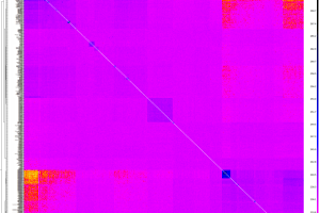When Zack ran ChromoPainter/fineStructure on South Asians the results naturally yielded a blueish hue along the diagonal. This is expected because the diagonal represents the population's own relationship with itself. The bluer the diagonal, the more inbred and isolated the population is likely to be. To the top left you see various Austro-Asiatic tribes, in the middle the "Gujarati A" population from the HapMap (probably Patels), and in the bottom right various Pakistani groups, who presumably have higher rates of consanguinity than the South Asian norm. But one group stands out among the other Pakistani groups: the Kalash. They're highly endogamous because they're the last pagan population in Pakistan, isolated in the fastness of the Chitral. It is likely that if their region of Pakistan had been under Afghan, and not British, rule these people would have been forcibly submitted to Islam like their Nuristani cousins across the border 100 ...
The Kalash in perspective
Explore the unique isolation of the Kalash population in Pakistan, a distinctive endogamous community shaping genetic analysis.
More on Discover
Stay Curious
SubscribeTo The Magazine
Save up to 40% off the cover price when you subscribe to Discover magazine.
Subscribe













